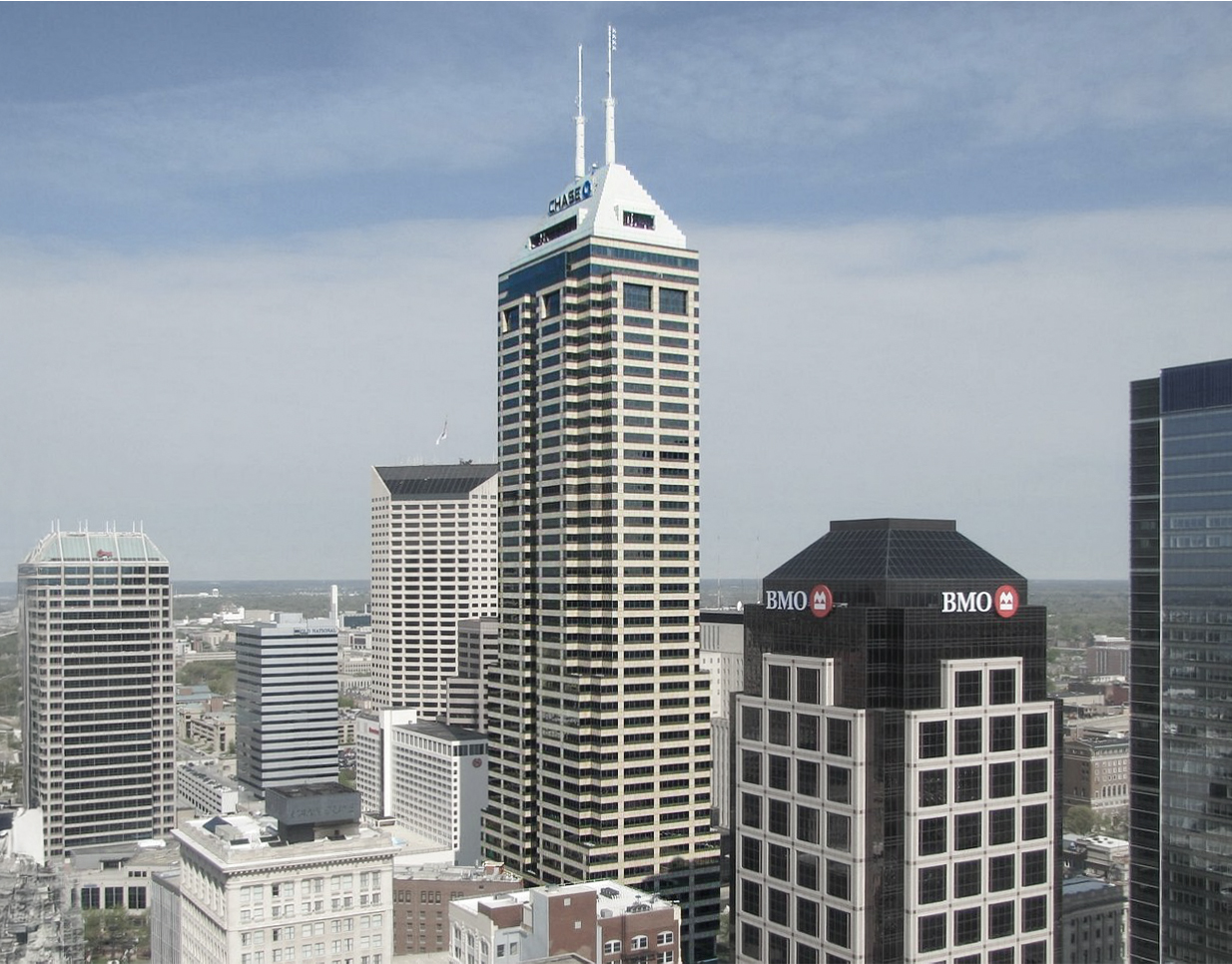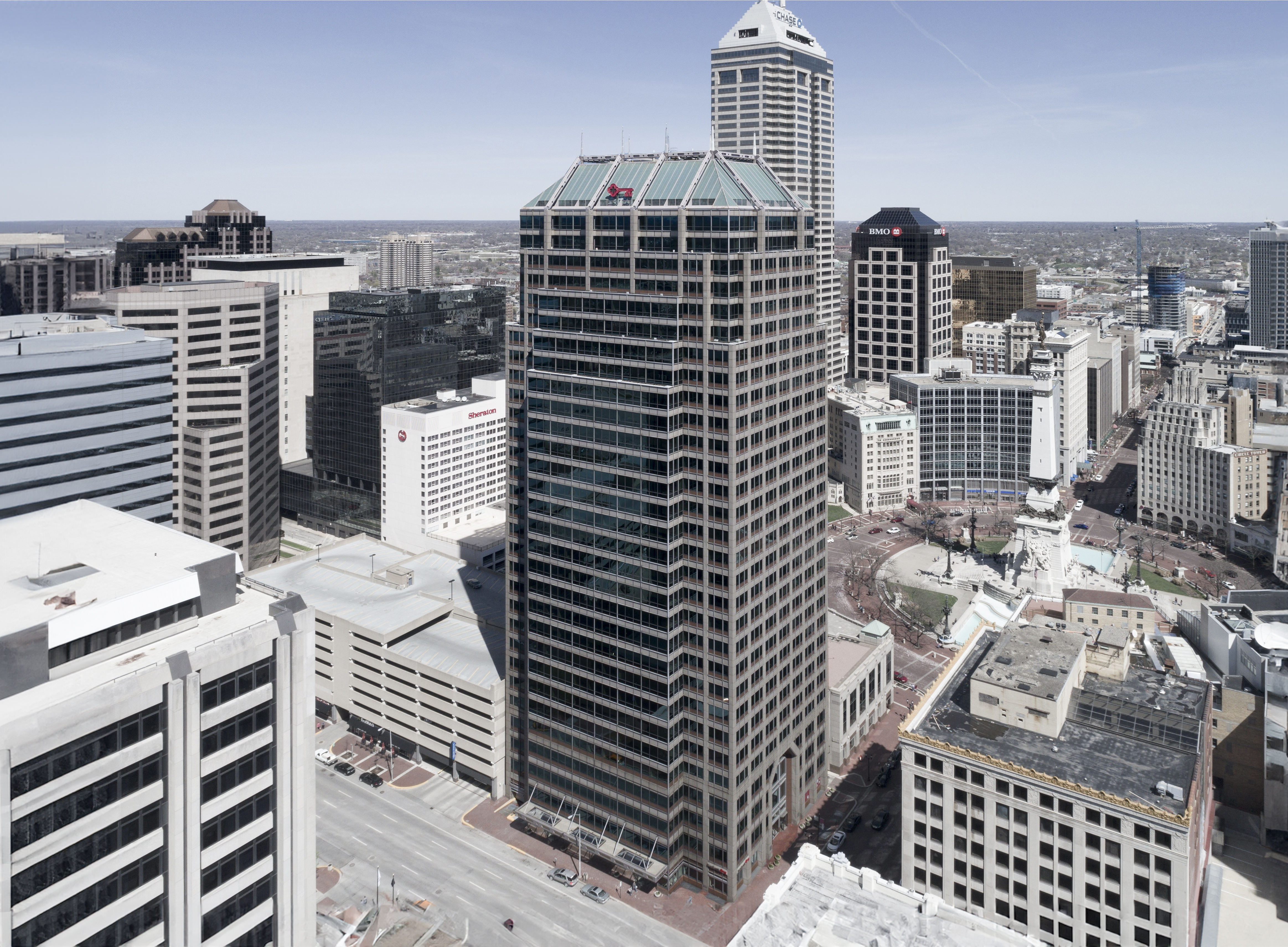The Salesforce Tower is a Postmodernist skyscraper designed by KlingStubbins, with Hugh Stubbins as lead architect, and built between 1987 and 1990 in Indianapolis, IN.
Salesforce Tower is not the only name you might know this building by though. It is common for companies to want to attach their names to iconic buildings when they move in, or for the general public to come up with nicknames, and this one is no exception. The building has changed names several times over the years, and is also known as:
- Bank One Tower between 1990 and 2004.
- Chase Tower between 2005 and 2017.
- Salesforce Tower from 2017 until this day.
Its precise street address is 111 Monument Circle, Indianapolis, IN. You can also find it on the map here.
The building underwent a major restoration in 2019. The architect commissioned to undertake this restoration was Mark Cavagnero Associates Architects.


